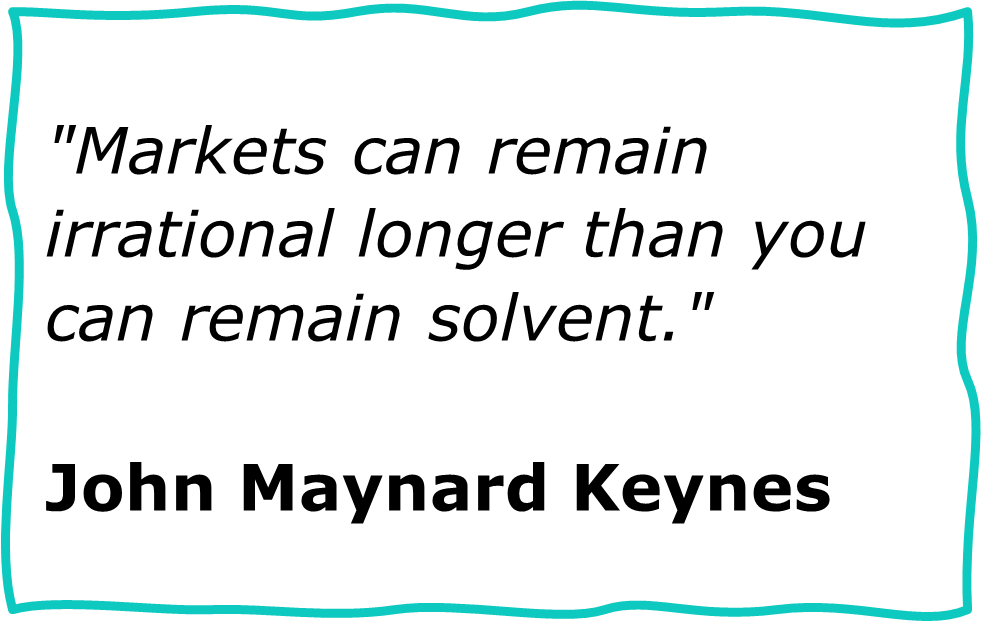 “Trump Trades” have been all the talk. There have undoubtedly been some big moves, but whether they can be attributed to Trump’s likely re-election is in doubt.
“Trump Trades” have been all the talk. There have undoubtedly been some big moves, but whether they can be attributed to Trump’s likely re-election is in doubt.
The better-than-expected US inflation numbers were on 11th July and financial markets responded instantly. Growth stocks, particularly the Magnificent 7, began to tank. Value shares and smaller companies, the poor relations for more than a decade, spiked sharply upwards. US rate cuts in September seemed a certainty.
For example, from that date US small caps were up 6% compared to the major S&P 500 index which is down 8%, a huge 14% difference in a little over 2 weeks. But it was very volatile. Initially smaller companies were up 9%, then lost more than half of this gain. Then on Wednesday this week we had “the worst day for US stocks since 2022”, and everything fell.
On such a day you know that gold is an absolute cert as a safe haven. Nope. It fell 2%.
But the week wasn’t over!
Yesterday (Thursday) news came through that the US economy was “flying”, and the estimates for GDP growth were “blown away”. Markets responded badly as this meant that interest rate cuts were much less likely in September. Was the roller coaster from 11th July all for nought? Should we all just have gone on holiday and then we could have ignored these gyrations?
In the UK the Thursday response to the “shock” growth in the US was “FTSE plunges” according to one report, and “the blue-chip index plummeted 1.16%”. In case the faux plunges and plummets were lost on you, the headline reiterated “three-month low”. I wonder what adjectives are left for when the indices regularly go up and down more than 5% per day, with occasional 10% daily losses?
By the end of Thursday, as investors teetered on window ledges, the FTSE was… up 0.4%. This didn’t elicit any response from the aforementioned writer.
You probably weren’t sucked in by all this noise and skittishness. Instead you were looking at US unemployment numbers, because the gloomy way in which they are unfolding means that a US recession is a “certainty”… do you remember… just like the inverted yield curve was a similar “certainty”?
While this excitement caught the imagination of the mainstream financial media, there was some very pointed and negative analysis on the fringes, the focus being the bursting of the S&P 500 bubble. John Hussman has now calculated that the US stock market has never been as expensive nor as extremely vulnerable. He doesn’t suggest a date or price for the top, but Robert Prechter’s Elliott Wave guys have little doubt the final top was 10th July.
I certainly accept the bubble and associated risks highlighted by John Hussman, but I cannot make out any analysis (Elliott Wave or otherwise) for declaring that the top was 10th July. If I am wrong this will be clear in the months ahead. For now, I am still looking for higher highs in the S&P 500, similarly with our very own FTSE 100.
Developments in China have also triggered negative analysis.
Last week we said that global investors into Chinese H shares, those quoted in Hong Kong, were disappointed by the outcome of the Third Plenum, where the Chinese leadership set out high level medium to long term policies. In the short term, to show commitment, we thought it was more likely that detailed action would be announced in the next week or two. Well, earlier this week they announced a surprise interest rate cut. Good news. Except that lower interest rates only help if people are inclined to borrow – which they aren’t because domestic confidence remains at a low ebb.
What China needs is more action to boost domestic confidence, which have only been dripped out to date. There are undoubted signs of economic improvement, confirmed by all recent visitors. But this is not being reflected in their very cheap stock markets, where global investors are very underweight (in H shares), and domestic investors are simply not buying their stock market (A shares), preferring to keep growing their cash holdings instead.
This highlights one of the problems of buying where there is good value. You do not know when this will attract investors sufficient enough to underpin a new multi-year bull market. It requires patience, and is also frustrating. We also remind ourselves that what is cheap can get cheaper, which is why we apply stop-losses.
Over the week, China wasn’t great, but it was in the company of most of the rest of the world. Japan was down nearly 6% (the stronger yen is bad for big exporters), Nasdaq down 4.5%, and the other Chinese and US indices down between 2.5% to 3.5%.
There was an exception, the FTSE 100 index, up 1.28%. If investors beyond these shores are buying the UK, that exposure would be achieved more effectively by buying the FTSE 250, rather than the FTSE full of global stocks. But many institutions know they are underweight in the UK, have been for years, and buying the FTSE is an easy way to get on board what many now see as the least dirty shirt across European financial markets.